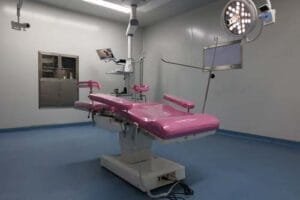Address
304 North Cardinal St.
Dorchester Center, MA 02124
Work Hours
Monday to Friday: 7AM - 7PM
Weekend: 10AM - 5PM
Childbirth is a significant event in a woman’s life, and ensuring a safe and comfortable delivery experience is a top priority in the field of obstetrics. Central to this experience is the choice of delivery table. In recent years, electric delivery tables have gained popularity for their advanced features, but traditional delivery tables still have their place in healthcare facilities. In this comprehensive article, we will compare the pros and cons of traditional and electric delivery tables, helping you make an informed decision when selecting the most suitable option for your maternity ward.
Delivery tables are an integral part of maternity care, providing a stable platform for expectant mothers during labor and childbirth. The choice between traditional and electric tables can significantly impact the childbirth experience.
-300x300.png)
One of the primary advantages of traditional delivery tables is their simplicity. They are easy to operate and require minimal maintenance, making them a reliable choice for maternity wards.
Traditional delivery tables are generally more budget-friendly than their electric counterparts. For facilities with limited financial resources, this cost-effectiveness can be a crucial factor in decision-making.
Many healthcare providers are familiar with traditional delivery tables, as they have been in use for a long time. This familiarity can lead to efficient and comfortable use during childbirth procedures.
Traditional delivery tables offer limited adjustability. Healthcare providers must manually position and adjust the table, which can be physically demanding and less precise.
The comfort of expectant mothers is a critical consideration. Traditional tables may be less comfortable during extended periods of labor and delivery.
Traditional tables do not integrate with modern medical technology, potentially requiring patient transfers for diagnostic procedures.
Electric delivery tables offer precise adjustments, allowing healthcare providers to customize the birthing experience for each patient. This precision can be especially valuable during childbirth.
Innovations in cushioning materials and ergonomic design make electric tables more comfortable for expectant mothers, even during extended periods of labor.
Electric tables come equipped with advanced safety features, including secure positioning mechanisms and emergency backup systems, enhancing patient safety.
Some electric tables seamlessly integrate with imaging technology, such as ultrasound or X-ray, allowing for real-time diagnostics and procedures without the need for patient transfers.
Electric tables minimize physical strain on healthcare providers, streamline procedures, and facilitate rapid adjustments during critical moments, leading to improved efficiency and better patient outcomes.

Electric delivery tables are typically more expensive than traditional tables. The initial investment can be a significant consideration for healthcare facilities.
Electric tables may require more maintenance and training for healthcare providers to operate effectively. Regular maintenance is essential to ensure proper functioning.
Choosing between traditional and electric delivery tables depends on several factors, including budget, patient comfort, safety requirements, and the familiarity of healthcare providers with the equipment.
Balancing the pros and cons of both types of delivery tables is essential. Some facilities may opt for a combination of traditional and electric tables to meet varying patient needs and budget constraints.
Let’s address some common questions related to the comparison between traditional and electric delivery tables.
Yes, traditional delivery tables are safe to use when operated by trained healthcare providers. However, they may lack some of the advanced safety features found in electric tables.
Traditional delivery tables have limited adjustability, which may restrict the range of birthing positions available to expectant mothers.
Electric delivery tables are suitable for many maternity facilities, but their cost and maintenance requirements may not be feasible for all healthcare settings.
Yes, healthcare providers may require specialized training to operate electric delivery tables effectively and safely.
Some traditional delivery tables can be retrofitted with certain modern features, although these upgrades may not provide the same level of functionality as purpose-built electric tables.
The choice between traditional and electric delivery tables in maternity wards depends on a variety of factors, including budget, patient comfort, safety requirements, and the preferences of healthcare providers. Both types of tables have their own set of pros and cons, and the ideal solution often involves finding a balance that meets the specific needs of the facility and its patients. Understanding these differences is crucial for healthcare professionals tasked with selecting the most suitable delivery table for their maternity ward.
